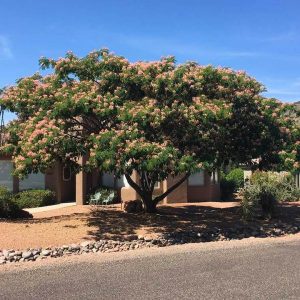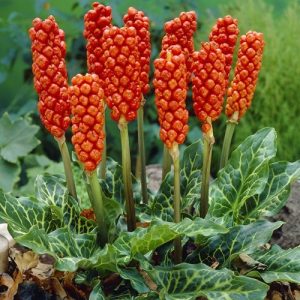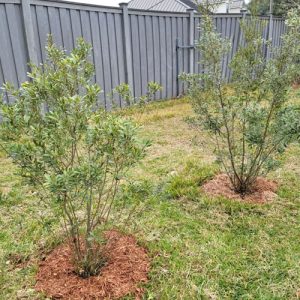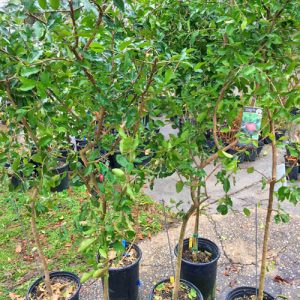- Excellent, Long-Lived Shade Tree
- Fastest Growing Oak Tree
- Lives Hundreds of Years
- Two-Toned Leaves Have Distinctive Lobed Shape
- Grows in Wet or Dry Soils
- Native to North America
- Supports Wildlife
- Transplants Easily
- Easy Care
- Large Rounded Growth Habit
If you want to make your mark on the Earth, try planting Swamp White Oak trees (Quercus bicolor). These beautiful, low-maintenance native trees can live for many hundreds of years. The lustrous distinctive leaves cast wonderfully refreshing shade for your family and friends, and for future generations. What a gift to bequeath and a great landscape choice!
With a rounded, open habit, Swamp White Oak is a long-lived tree that is very valuable for both its lush shade and as a food source for wildlife. The name bicolor refers to the two-toned leaf; shiny, dark green above and velvety-white below, turning golden in the fall.
This attractive deciduous tree has a rounded open habit. Vigorous Swamp White Oak trees transplant easily and bring energetic style to the landscape. Beautiful leaves are held erect from the gently upright branches.
Smooth lobed, distinctive bi-color leathery leaves are dark green on top and light gray-green on bottom. Theyll flash and shimmer in the sunlight for a wonderful summer display. The young bark peels to reveal an orange inner bark for winter interest.
This native deciduous Oak is a staff favorite. It can tolerate a wide range of conditions. Once Swamp White gets established (which is easier for this Oak than most others) it will put on incredible amount of growth.
You might think that Oak trees are slow growing, but that is not true when they are young. The Swamp White Oak in particular is a fast grower. In the nursery, it grows as fast as most of our Maples. Youll enjoy a tree that casts dense shade within 10 years.
Fall color ranges from harvest gold to russet brown, and in some years displays a beautiful red and orange. The color depends on your soil and geographic area. It will also vary from year to year, part of the joy of gardening.
Youll enjoy the long season of screening with young Oaks. It typically holds the bottom third of their leaves until wet winter snows pull them from the branches.
How to Use Swamp White Oak in the Landscape
This majestic oak grows well in either upland or swampy areas. For a tree named Swamp White Oak, it has surprisingly good drought tolerance!
If you have the room, include in mixed plantings. Create your own Oak savannah as a food forest for wildlife. Incorporate several Oaks and then plant the understory with spring flowering bulbs and food producing shrubs, like Glossy Black Chokeberry, American Cranberrybush Viburnum, Chickasaw Plum or American Hazelnut.
Oaks make fantastic specimen plants, so plant a single tree off to the right or left side of your home to help frame the view. For wide properties, use an odd number in drifting informal groups as a memorable focal point.
Swamp White Oaks make excellent street trees and can tolerate road salt used in icy climates. However, they cant handle salt sprayed up from passing cars. Use in neighborhoods where the traffic is slow and will not spray salt, and the plant will grow beautifully.
The key to success of any urban landscape is to include many different Genus of trees. Weve learned hard lessons about lining streets with all the same kind of tree. Include different kinds of tree in the mix on your property to protect your investment.
Use in Rain Gardens to help filter runoff water from roofs and streets. Far better to use plants to slow down the flow of potentially polluted water before it hits the storm drain and out into local streams and rivers.
A gift of a long-lived Swamp White Oak makes an incredibly meaningful wedding present for a young couple, or to celebrate important life events. What a special tree.
Tips for Care
This stately tree is widely adaptable. It performs best in full sun but will tolerate partial shade. It grows best in slightly acidic, well-drained soils. It is tolerant of poorly drained sites and frequently is found in heavy, mucky soils.
After the first few seasons, youll be surprised how well the Swamp White Oak manages drought conditions. Plan to give young trees a moderate amount of regular water to get the roots established in your landscape.
Prune Oak trees during the winter months when they are dormant. Prune young trees to ensure a single leader and remove crossing branches. Remove lower branches to raise the canopy as desired as it develops into a mature tree.
Swamp White Oak acorns are prized as mast for wildlife. It can take up to 20 years before you may see acorns on many Oak trees. Eventually, it will begin to produce 1 inch long acorns that are held on long stalks.
The sweet acorns are relished by whitetail deer, mallards, wood ducks, wild turkeys, squirrels, and woodpeckers. The acorns mature and are shed in September or October of the same year.
In urban settings, its a good idea to plant at least 30 feet from patios and driveways. Why not create a mulched bed underneath to keep things easy for yourself?
People often confuse this tree with Bur Oak. Just take a peek up into the canopy to see the difference. Swamp White Oak leaves are rounded with smooth, shallow lobes. There are no bristle tips. Young branches exfoliate to reveal orange inner bark and the trunk is covered with pale, light gray bark that features a unique, ornamental blocky, rectangular pattern. Bur Oak has corky-winged young branches and deeper sinuses on the lowest leaf lobes.
Highly ornamental, the Swamp White Oak is a national treasure tree.
Swamp White Oak (Quercus bicolor) Details
| Common name | Swamp White Oak |
| Botanical name | Quercus bicolor |
| Hardiness zone | 4-8 |
| Growth rate | Fast |
| Height | 50 - 60 ft. |
| Width | 50 - 60 ft. |
| Sunlight | Full Sun |
| Moisture | HIgh, Medium, Low |
| Soil condition | Widely Adaptable |
| Pollinator-friendly | Yes |
| Flower color | Deciduous |
| Leaf color | Deciduous |









